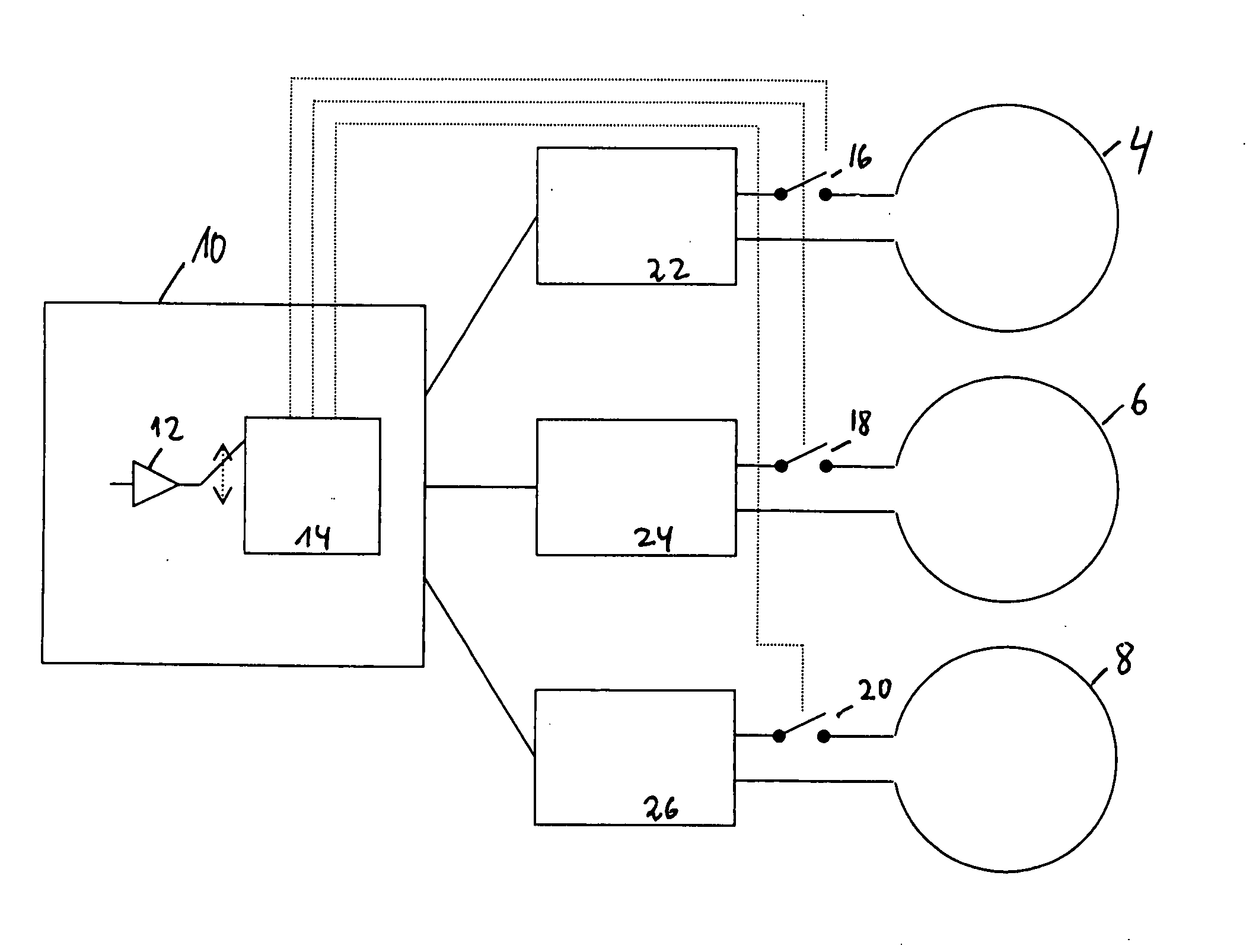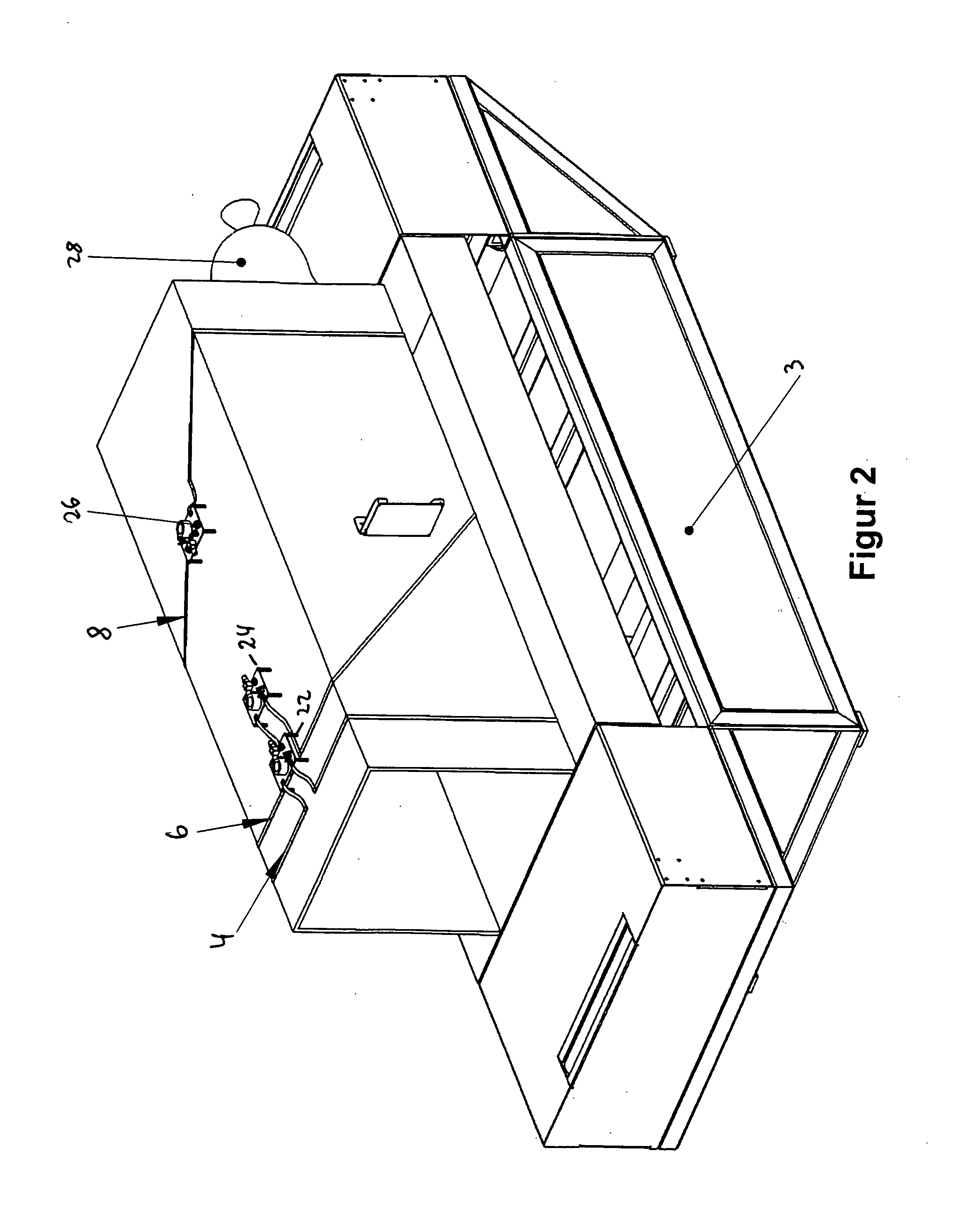Identification device for objects with a transponder and a corresponding method
a technology of identification device and transponder, which is applied in the direction of transmission, indirect connection of subscriber, sensing record carrier, etc., can solve the problems of affecting the identification capacity of objects, affecting the identification capacity, and only working mode, so as to increase the identification capacity and increase the identification capacity
- Summary
- Abstract
- Description
- Claims
- Application Information
AI Technical Summary
Benefits of technology
Problems solved by technology
Method used
Image
Examples
Embodiment Construction
[0031]In an embodiment, the tunnel denoted as 2 in FIGS. 1 to 3 is provided with three antennas 4, 6 and 8 which are laid out as coils around the tunnel. On the bottom surface of tunnel 2 there is arranged conveyor device 3, namely a transport band for the transport containers containing the objects provided with transponders. In FIG. 2 the identification device is shown without the shielding 11 shown in FIG. 1, so that the tuning devices 22, 24 and 26 can be seen.
[0032]The normal of the plane of the first antenna 4 is parallel to the transport direction x of the conveyor band, and this direction is indicated as x′ in FIG. 1. In the present embodiment the first antenna 2 coincides with the tunnel entrance. The second antenna 6 is tilted (vertically) with respect to the first antenna 4 by an angle of about 45°. The normal of its plane is indicated as y′ in FIG. 1. An important feature of the present embodiment is that the center of the second antenna 6 lies approximately in the middl...
PUM
 Login to View More
Login to View More Abstract
Description
Claims
Application Information
 Login to View More
Login to View More - R&D
- Intellectual Property
- Life Sciences
- Materials
- Tech Scout
- Unparalleled Data Quality
- Higher Quality Content
- 60% Fewer Hallucinations
Browse by: Latest US Patents, China's latest patents, Technical Efficacy Thesaurus, Application Domain, Technology Topic, Popular Technical Reports.
© 2025 PatSnap. All rights reserved.Legal|Privacy policy|Modern Slavery Act Transparency Statement|Sitemap|About US| Contact US: help@patsnap.com



